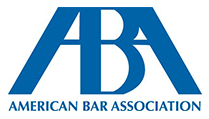Speeding Car Accidents
Introduction Speeding Car Accident Claims, Lawyers and Lawsuits
Our culture is one in which “time is money” – we don’t have time (or money) to spend commuting from our homes to our jobs or from worksite to worksite. Drivers find various ways to justify speeding while driving:
- “I have to get to work (or some other engagement) on time or else…”
- “Everyone else is speeding – I have to keep up with the ‘flow of traffic…’”
- “I’m a good and careful driver – I can speed and still remain safe…”
Whatever the reason one uses to justify his or her speeding (if he or she uses a reason at all), none of them actually make speeding a safe or acceptable practice. To the contrary, individuals who speed are statistically more likely to cause car accidents. The greater the speed of the vehicle at the moment of impact, the more likely it is that those involved – the speeding driver and innocent passengers or motorists alike – will suffer catastrophic or fatal injuries.
Speeding Car Accident Statistics
Many drivers view speeding as a minor, harmless offense. Statistics from the National Highway Traffic Safety Administration (NHTSA) and the National Safety Council (NSC) paint a different picture, however:
- As of 2012, approximately 13,000 individuals lose their lives in crashes caused in whole or in part by speeding;
- It is estimated that one-third of all fatal car accidents involve speeding;
- Speeding is the third-leading factor in all traffic crashes.
Sometimes the tragic and (in some cases) fatal consequences of speeding are visited upon those motorists who do obey speed limits and other rules of the road. If the at-fault motorist’s speed contributed to the collision or caused the victim(s) to suffer injuries or death, then the injured victim(s) – or the victim(s) surviving family members – may be entitled to pursue a claim for compensation against the speeding motorist responsible for the crash.
Speed Limits and Speeding Car Accidents
Nearly every roadway in the United States is regulated by a speed limit – a maximum speed beyond which cars and motor vehicles traveling that particular stretch of roadway are not to exceed. Even if there are no “speed limit signs” posted, in many cases local or state laws will indicate the speed limit applicable to the road or highway. In many cases, speed limits are set by authorities after carefully considering the anticipated volume of traffic that will travel the road, the nature of the road (whether it is largely straight and flat or if it is winding and fraught with sudden changes in elevation), and the safety features on the road.
Because a reasonable and prudent driver would obey speed limits (whether they are posted or not), evidence that a motorist was traveling in excess of the speed limit may be used to support an injury victim’s contention that the speeding driver operated his or her vehicle in a careless manner. The injury victim/plaintiff would then need to show a causal connection between the motorist’s excess speed and the victim’s/plaintiff’s injuries.
Speeding Car Accidents When the Speed Limit is Not Violated
Speed limits set a maximum speed beyond which motorists may not travel on a given road. These speed limits do not necessarily indicate the speed at which it is “safe” to travel. Ice, rain, fog, smoke, and other conditions may make it dangerous to drive at the speed limit. Regardless of the speed limit, every driver has an obligation to drive at a safe speed considering the prevailing road and weather conditions. For example, when the road is wet and rain is falling such that the driver’s visibility is impaired, that driver is responsible for reducing his or her speed so he or she can maintain control of the vehicle and has sufficient time to maneuver around any obstacles or hazards that might suddenly appear.
Just as violating the posted speed limit during dry and clear conditions may be considered negligent behavior, traveling too fast for prevailing road conditions can also be considered negligent behavior if a reasonably prudent driver would have driven at a slower speed than did the motorist who caused the crash.
Seek Help Following a Speeding Car Accident
Because the forces of a car accident increase significantly when one or both of the vehicles involved are traveling at excessive speeds, a speeding car crash can leave you and your loved ones with severe injuries that prevent you from returning to work and disrupt your family’s life for weeks or even months. Stern Law, PLLC can help alleviate some of the financial strain and pressure you may be feeling over your medical bills and reduced earning capacity by helping you pursue compensation against the at-fault driver. Determining the speed at which an accident occurred can be complex and require expert witnesses to analyze the scene of the crash for clues and/or review information stored in the internal computer of the cars. Attorney Ken Stern knows how to help his speeding car crash injury victims present their claims in a compelling and well-supported manner. Contact Stern Law, PLLC today at (800) 462-5772.













